► Ford Probe revisited
► We get behind the wheel of a legend
► Did it deserve its reputation?
In the same way a car can have its fortunes predetermined by being assigned a crap name, an editor can throw a journalist’s career into jeopardy by tasking him with fighting the case of one of the most ridiculed cars of its generation.
But in the red corner today is the fact that I spent the mid-1990s infatuated by this very model, spending my pre-internet connection years blissfully unaware of the derision that plagued the Probe. Just me, my Matchbox model and a once-glossy, soon-tattered sales brochure.
So put that P45 on ice for a minute.
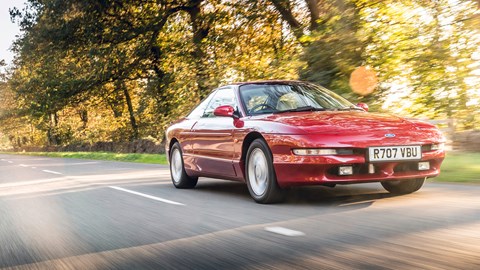
I should probably explain. The preceding years for the eight-year-old in question had been spent overhearing enthusiastic tales of Capri ownership, witnessing Escort MkIIs negotiate roundabouts carrying heroically absurd slip angles, and catching the late-night highlights of Mobil1-liveried Escort RS Cosworths tearing up the special stages.
Then came this – a new flagship coupe from the same glorious marque. It was sleek and sophisticated in the same way that No Fear T-shirts and Levi jeans were trendy, and for me the connotations the name threw up were limited to un-manned spacecraft – stopping mercifully short of associations with sex toys and public inquests.
The glossy sales brochure neglected to mention the Mazda origins of the underpinnings – it shared a drivetrain, production line and even a Haynes repair manual with the MX-6 – and the significance of which wheels were driven was lost on me. But for many of those who had owned its spiritual predecessor, the (at the time) long-departed Capri.
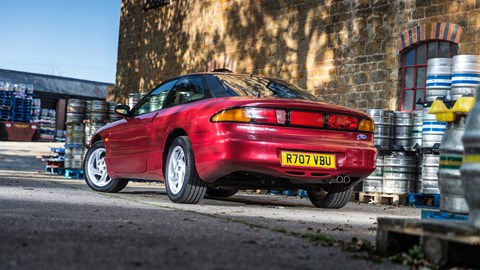
The Probe was one of Ford’s first ‘global’ cars so responsibility/blame for the name, styling and humble origins could be placed squarely at its motherland’s border. Except there – in its second-generation form following on from the 1988-’92 Probe – it was hardly embraced either. As well as sending drive to the wrong end, it had two missing cylinders and too much Japanese input. And more importantly, it wasn’t a Mustang reincarnate.
The Probe might not have seen showrooms swamped on either side of the Atlantic, but at least it meant Ford Europe had something ‘oven-ready’ to field against the likes of the Vauxhall Calibra, VW Corrado and Toyota Celica during a time when four-seater sports coupés were En Vogue (remember them?). And despite being drafted in from the US to play on away turf at relatively short notice, the Probe didn’t just turn up but gave a commendable dynamic performance; CAR’s 1994 group test featuring the same rivals saw it place second only to the significantly more powerful Corrado VR6.
Nevertheless, history glorifies winners and punishes the unfortunate, so the Probe can still elicit sniggers like it was 1995. But 30 years on, shouldn’t we… be kind?
Well, it’s certainly a lot easier to do so when a mint example today costs a fraction of the price Ford was asking new – an increasingly rare phenomenon these days. Pull open the frameless door and you drop into a restrained cabin where dash and doorcards share a swooping arc, and light floods in via a wraparound greenhouse and standard-equipment sunroof.
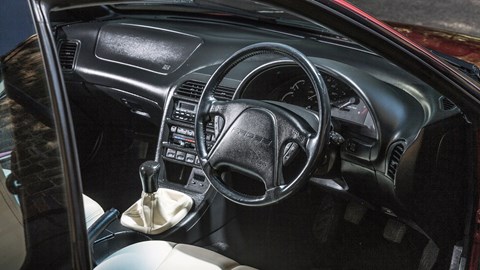
You grip a chunky leather-bound wheel that wouldn’t feel out of place commanding an F-150, but elsewhere there’s an ergonomic delicacy to proceedings (bar the unintuitive stalk arrangement). Designer Mimi Vandermolen once said, ‘If I can solve all the problems inherent in operating a vehicle for a woman, that’ll make it that much easier for a man to use.’ Strange that it never quite won over the Capri crowd.
But the theory was that those who drove Capris 20 years earlier might have grown up and become a bit more discerning. Fire the Probe’s V6 and it’s immediately clear that the coarseness of yore has been banished, those much-vaunted 24 valves working with slick Japanese precision to contribute to a creamy purr that deserves more volume than the twin-tailpipes allow. It remains subdued throughout the tacho needle’s travel, the V6’s motivation dwindling as it approaches the warpaint, but it takes only a few minutes to realise that the Probe’s forté is its mid-range pull.
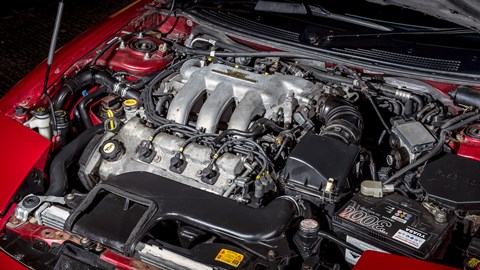
What the Probe lacks in willingness to rev it makes up for in eagerness to attack corners, the MacPherson strut front suspension – co-developed by Ford and Mazda to be short so it could facilitate a low bonnet line – benefitting from firmer spring and damper rates and thicker anti-roll bars than in its Japanese cousin.
It does transmit the odd jolt, but primary ride quality is good enough for those Capri alumni, had they actually existed. And even when given a bootful in the right power band when exiting a tight corner, the Probe refuses to spin an inside front tyre. But of course, those would-be Capri graduates are still sulking because it won’t spin an inside rear either.
True, the gearbox is too closely-ratioed low down, and some would find the steering a little too slow given the chassis’ keenness to turn in, but at least it has decent weight and feel when loaded up, and holds a straight course without the type of fidgeting prevalent in most of the over-assisted cars born in 1990s America.
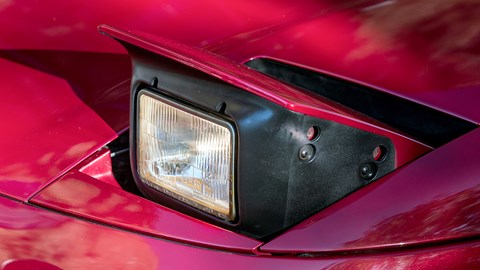
So, are the Probe’s dynamic abilities enough to forgive the old ‘don’t meet your heroes’ adage? Well, the 25 years between falling for the Probe and driving one has allowed me to re-evaluate what deserves hero status, so I don’t have to worry about it not being the sporting-Ford figurehead my eight-year-old self presumed it was. Rather, a quarter-century of derision set me up to be as underwhelmed as the buying public was, so in that respect the Probe in fact exceeds my expectations. So it’s worth trying one in case it exceeds yours too, because it’s temptingly cheap.
No, there’s no escaping the name. But credit where it’s due, Ford learned its lesson. Thereafter it took the christening process far more seriously – the next names to emerge from the Blue Oval included ‘Focus’ and ‘Puma.’
After being relentlessly taunted for 30 years, it’s time the poor, endangered Probe was exonerated on all counts.
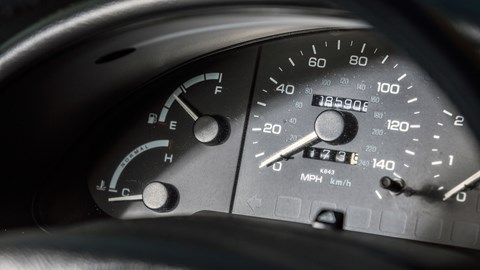
This article originally appeared in the 2020 September issue of Modern Classics.
Ford has grappled with the vexed issue of replacing the Capri in Europe time and time again. First there were a series of unreleased Sierra-based Coupes in the early 1980s, then followed by a small convertible based on the Mazda 323, which came to the market in the USA as the Mercury… Capri.
But here in Europe, we had to wait for the Ford Probe. This was a very different beast to what came before, but very much in tune with the times. Front-wheel drive, just like a Vauxhall Calibra or Volkswagen Corrado, and highly aerodynamic like the concept cars it was named after, the Probe should have been a huge hit. That it wasn’t showed that Ford had lost its winning ways – misjudging what its buyers wanted.
So, it was a slow seller, and for people of a certain age forever associated by Steve Coogan’s awful go-getting salesman Gareth Cheeseman. Does that taint its classic kudos? Not really – as it never really hit the heights in the first place – which makes it an appealing low-cost, head-turning modern classic that you won’t feel bad about using on a daily basis.
Specifications (Ford Probe 24v)
Engine 2497cc, 24valve V6, DOHC
Transmission FWD 5-speed manual
Performance 160bhp@5500rpm 156lb-ft@4800rpm, 28mpg, 0-60mph 8.5 seconds, top speed 137mph
Weight 1280kg